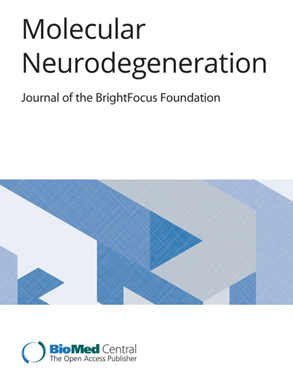Glial phagocytosis for synapse and toxic proteins in neurodegenerative diseases.
IF 17.5
1区 医学
Q1 NEUROSCIENCES
引用次数: 0
Abstract
Glia, as resident immune and supportive cells of the central nervous system, play a critical role in maintaining brain homeostasis. One of their key homeostatic functions is phagocytic capacity in pruning synapses and removing cellular debris/protein aggregates, a process vital for synaptic plasticity and brain maintenance. However, these phagocytic functions are often dysregulated with aging and in neurodegenerative diseases (NDs), such as Alzheimer's disease, Parkinson's disease, Huntington's disease, amyotrophic lateral sclerosis, and frontotemporal dementia. This review aims to examine the phagocytic roles of glia under both physiological and pathological conditions, with a special focus on their interactions with misfolded protein aggregates, including amyloid beta, tau, alpha synuclein, prion, huntingtin, and TAR DNA-binding protein 43. We also explore the fate of ingested molecules after being phagocytosed by glia-whether they are degraded, accumulate intracellularly, or are transferred between cells-and their implications for disease progression. Finally, we review current therapeutic strategies and the potential approaches for modulating glial phagocytosis to mitigate several NDs. We believe that understanding the exact mechanisms of glial phagocytosis and clearance will serve as key elements in developing future treatments for NDs.神经退行性疾病中突触和毒性蛋白的胶质吞噬作用。
神经胶质细胞作为中枢神经系统的常驻免疫和支持细胞,在维持大脑稳态中起着至关重要的作用。它们的关键稳态功能之一是在修剪突触和清除细胞碎片/蛋白质聚集体中的吞噬能力,这是突触可塑性和大脑维持的重要过程。然而,这些吞噬功能往往随着年龄的增长和神经退行性疾病(NDs)而失调,如阿尔茨海默病、帕金森病、亨廷顿病、肌萎缩侧索硬化症和额颞叶痴呆。这篇综述旨在研究神经胶质在生理和病理条件下的吞噬作用,特别关注它们与错误折叠蛋白聚集体的相互作用,包括淀粉样蛋白β、tau、α突触核蛋白、朊病毒、亨廷顿蛋白和TAR dna结合蛋白43。我们还探讨了被胶质细胞吞噬后摄入的分子的命运——它们是被降解、在细胞内积累还是在细胞间转移——以及它们对疾病进展的影响。最后,我们回顾了当前的治疗策略和潜在的方法来调节胶质细胞吞噬以减轻几种NDs。我们相信,了解胶质细胞吞噬和清除的确切机制将成为开发未来nd治疗的关键因素。
本文章由计算机程序翻译,如有差异,请以英文原文为准。
求助全文
约1分钟内获得全文
求助全文
来源期刊

Molecular Neurodegeneration
医学-神经科学
CiteScore
23.00
自引率
4.60%
发文量
78
审稿时长
6-12 weeks
期刊介绍:
Molecular Neurodegeneration, an open-access, peer-reviewed journal, comprehensively covers neurodegeneration research at the molecular and cellular levels.
Neurodegenerative diseases, such as Alzheimer's, Parkinson's, Huntington's, and prion diseases, fall under its purview. These disorders, often linked to advanced aging and characterized by varying degrees of dementia, pose a significant public health concern with the growing aging population. Recent strides in understanding the molecular and cellular mechanisms of these neurodegenerative disorders offer valuable insights into their pathogenesis.
 求助内容:
求助内容: 应助结果提醒方式:
应助结果提醒方式:


